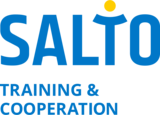The Youthpass concept
Aim
Development and implementation of a special European level validation instrument for YOUTH/Youth in Action as a package of different instruments for the Actions 1.1 (1), 2, 1.2 (3), and 4.3 (5) (Youthpass) and with this fostering of the recognition of non-formal learning within the YOUTH/Youth in Action Programme in order to support
- the employability of young people and youth workers;
- the reflection upon the personal non-formal learning process;
- the social recognition of youth work.
Objective 1
Development of (a) qualified certificate(s) for all Actions, which confirm(s) the participation in an approved project and describe(s) the learning outcome in general. The certificate should include data of different actors and projects, aims and objectives of the YOUTH/Youth in Action Programme, and – if necessary – other detailed Action-related aims and objectives to be achieved by this project. This is planned to be used in short-term and long-term projects.
Objective 2
Development of additional self-assessment instruments for approved long-term projects within relevant Actions as an annex to the certificate(s) mentioned above. The instruments should be developed from the user´s perspective, should document the learning process, and should raise awareness that competencies and skills were strengthened during the project. Probably, the self-assessment instruments can be used later for short-term projects as well, depending on the experience made during the work plan period.
Perspectives
In the long run, Youthpass should be integrated in / linked with other European level initiatives, such as EURO-PASS and / or initiatives and programmes within other EU programmes within the context of Active Citizenship.
Starting point
Actions to achieve the aim and objectives of Youthpass should be based on the 'Common European principles regarding identification and validation of non-formal and informal learning', developed within 'Working Group H' and adopted by a Council conclusion.
1. Individual entitlements
2. Obligations of stakeholders
3. Confidence and trust
4. Credibility and legitimacy
5 elements should translate the aim and objectives into action
1. Certificate(s) and self-assessment instrument(s)
2. Training for NA staff to motivate and train national multipliers
3. Procedures for implementation within the YOUTH/Youth in Action Programme
4. Information material for a wider audience (User´s Guide etc.)
5. Technical support (Youthlink, Symmetry, etc.)
10 steps should guarantee a suitable work flow to implement the mentioned instruments within the different Actions. Due to existing resources and procedures, not all steps can be and need to be considered for all Actions and both instruments, nor will all of them start at the same time
1. Assessment of existing instruments and resources
2. Development of instruments
3. Test phases with 3 NAs per Action
4. Evaluation of the test phases
5. Re-design of the instruments
6. Final approval by the Commission
7. Implementation of the instruments in all NAs
8. Assessment and evaluation
9. Recommendations for Youth in Action
10. Implementation in the new programme
An Advisory group will be established and should
- support the development of the instruments and monitor their implementation and further adjustment,
- consist of 10-15 experts from different fields, being balanced in terms of region, gender, and size of country, where the members come from,
-
have suitable resources to meet regularly and to set up smaller working groups to develop and adjust the needed instruments.
Role of the SALTO Training and Co-operation RC
- Communication between the different actors in YOUTH/Youth in Action
- Installing, managing, and chairing the Advisory group
- Organising the development of validation instruments and
administrative procedures together with experts and practitioners - Organising test and pilot phases
- Developing and implementing training models for the users
- Publishing tools and (a) user´s guide(s)
